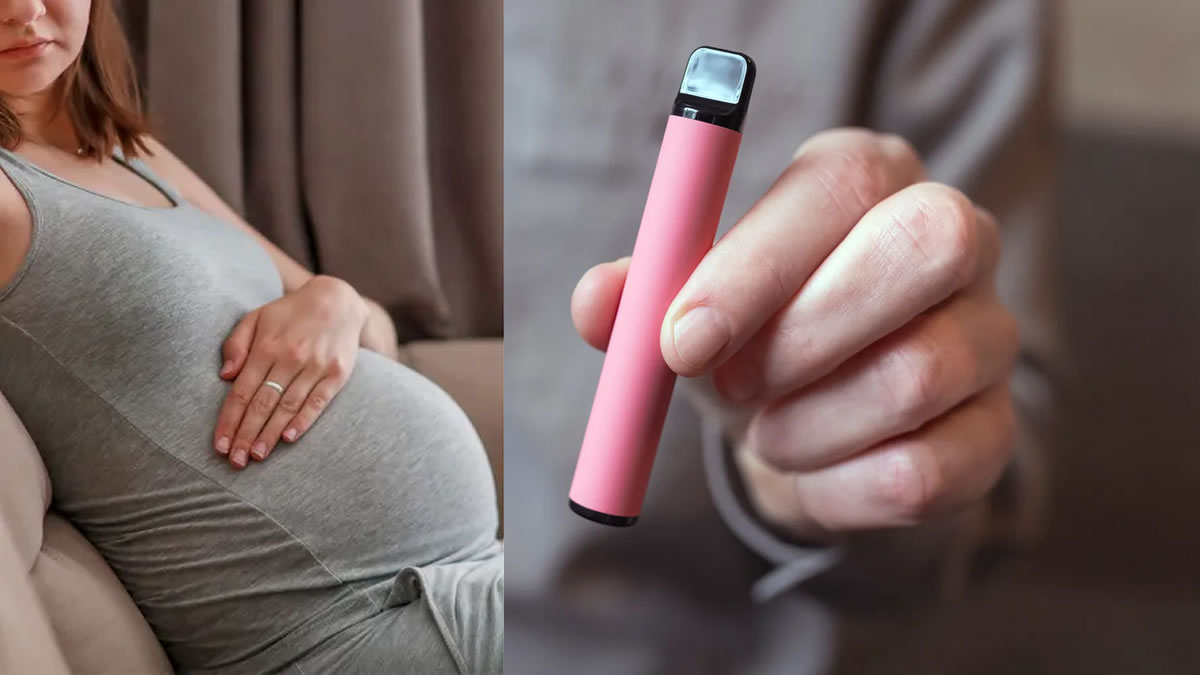Your cart is currently empty!

Nicotine-Free Vaping in Pregnancy May Affect Fetal Skull
A new study has raised concerns about the safety of vaping during pregnancy, suggesting that exposure to the common base ingredients in e-cigarette aerosol – even without nicotine – may alter the shape of a developing baby’s skull. The research, conducted on pregnant mice at Ohio State University and published in the journal PLOS One, found that two primary liquid ingredients used in virtually all e-liquids had a significant impact on fetal development, leading to lower birth weights and measurable changes in cranial and facial features.
This study adds a new layer of complexity to the public health debate surrounding e-cigarettes, which are often perceived as a safer alternative to smoking. While the dangers of nicotine exposure during pregnancy are well-established, this research suggests that the non-nicotine components of vape aerosol may also pose risks to fetal development.
The Study: Exposing Pregnant Mice to Common Vape Ingredients
Researchers conducted a series of experiments to investigate the effects of the two most common humectants, or base liquids, used in e-cigarettes: propylene glycol (PG) and vegetable glycerin (VG). These substances function as the carriers for nicotine and flavorings in e-liquids and are responsible for creating the visible aerosol, or “smoke plume,” and the “throat hit” sensation that vapers experience.
Pregnant mice were divided into groups and exposed to different atmospheric conditions during their approximately three-week gestation period. The exposure occurred for four hours per day, five days a week, at a rate of one puff per minute. The groups included:
- A control group exposed to filtered, clean air.
- A group exposed to a 50/50 mixture of propylene glycol and vegetable glycerin.
- A group exposed to a 30% propylene glycol and 70% vegetable glycerin mixture.
Crucially, none of the vape mixtures contained nicotine, allowing the researchers to isolate the effects of the base liquids themselves.
“Surprising” Findings: Skull Shape Changes and Lower Birth Weights
The results of the study were described as “surprising” by the authors for several reasons. The offspring of mice exposed to the vape ingredients, particularly the 30/70 PG/VG ratio, exhibited distinct developmental differences compared to the control group and the 50/50 ratio group. These included:
- Lower Birth Weights: While still within the normal range for their age, the mice exposed to the 30/70 mixture consistently weighed less than their counterparts.
- Shortened Skulls and Narrower Facial Features: The most significant finding was a measurable reduction in the width and height of the cranium and a consistent narrowing of all facial features.
Lead study author James Cray, a professor of anatomy at Ohio State University College of Medicine, stated in a press release, “What we see is a consistent narrowing of all of the facial features, and the same thing as we move back into the cranium as well. So globally they’re narrower and a little bit shorter-headed, which does mimic some observable changes that we see in children.”
The researchers were particularly surprised that the 30/70 PG/VG ratio, which contains more vegetable glycerin, produced more pronounced effects. “A lot of companies have moved toward getting away from a high percentage of propylene glycol toward more glycerol, trying to position this as a safer alternative,” Cray explained, noting that PG is known to transmit nicotine more efficiently. “We thought heavier propylene glycol should be causing more effects, and it was the exact opposite.” The 50/50 mixture, in contrast, showed no dramatic statistical changes.
Public Health Implications and Broader Context
The potential health risks of nicotine exposure during pregnancy are already well-established. The Mayo Clinic reports that nicotine can cause permanent damage to a developing baby’s brain and other organs. The Centers for Disease Control and Prevention (CDC) also notes that about 3% of babies are born each year with nicotine-related birth defects, with alterations to the head and neck, such as cleft lips, being among the most common.
This new study, however, shifts the focus to the potential risks of nicotine-free vaping during pregnancy. The findings suggest that even without the primary addictive substance, the act of inhaling the aerosolized base liquids could have unforeseen consequences for fetal development. This is particularly concerning given the widespread use of vaping among young adults and teenagers, who are in their peak reproductive years.
“The majority of users are young adults and teenagers… And with development of the head happening very early in fetal development, people could be using these products and not even realize that they are pregnant, which is of great concern,” Cray stated. He emphasized the importance of understanding the health issues surrounding e-cigarettes, especially as legal battles over their regulation continue between the FDA and manufacturers.
The study’s authors are clear about the limitations and the need for further research. “This is a small study that speaks to the possibility that nicotine-free vaping is not safe,” Cray concluded. “And it’s a sign that we probably should study the nicotine-free products as much as we study the nicotine-laden products.”
The core message for the public, and especially for those who are pregnant or planning to become pregnant, is that the assumption of safety for nicotine-free vaping may be premature. While many compounds are considered safe to eat, their effects when heated and inhaled are often fundamentally different and less understood. This research underscores the need for caution and further investigation into the full spectrum of potential health impacts of all vaping products.
by
Tags: